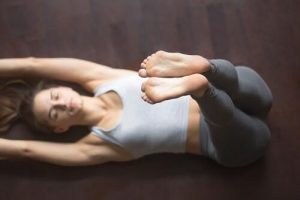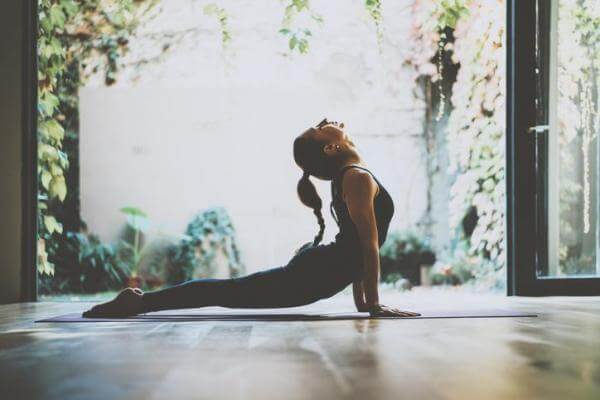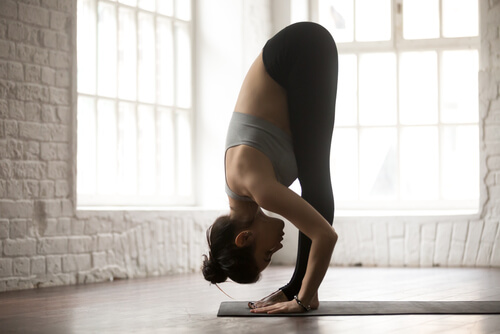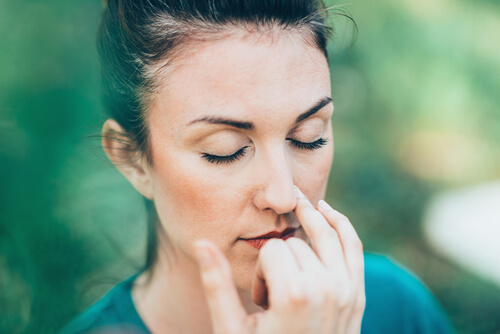Four Yoga Asanas for Better Sleep

Insomnia is one of the most common problems in the Western population. Due to factors such as stress, poor diet, and unhealthy lifestyles, there are many who find it difficult to sleep as much or as deeply as they need. In addition to causing problems with day to day activities, insomnia also has negative effects on physical and mental health.
Nowadays, there are many remedies to fight insomnia. One remedy consists of taking infusions before going to bed. Another is drugs that supposedly solve lack of sleep in an instant. However, some of the most effective remedies are yoga asanas for better sleep.
What are yoga asanas?
Yoga asanas are yoga poses designed to produce beneficial effects on the body and mind. Yoga has been practiced for thousands of years in Eastern countries. It recently gained popularity in Europe as well. In theory, it combines the benefits of meditation with those of physical exercise, making it a very powerful ally against insomnia.
Yoga poses are typically quiet and slow movements. And because yoga forces you to focus your attention on your body, it’s a very relaxing exercise. However, each asana has a different effect on the body so they’re not all effective for the same thing. Let’s look at which asanas can help you get better sleep.

The best yoga asanas for better sleep
According to the experts, the best yoga poses for fighting insomnia are:
- Easy pose or Sukhasana.
- Standing forward bend or Uttanasana.
- Legs-up-the-wall or Viparita Karani.
- Alternate nostril breathing or Nadi Shondhana.
Let’s take a look at them.
1. Easy pose
As the name indicates, Sukhasana is one of the best asanas for beginners. If you never practiced yoga but want to fight your insomnia, you’ll want to start with this pose.
The pose is very simple. You just have to sit cross-legged (in the pose that we associate with yoga) and tilt yourself forward. The goal is to stretch your arms and back as much as you can. If you’re really flexible, you should be able to touch the ground with your forehead.
This pose is very effective because it relaxes your whole body and opens the hips. This creates a feeling of well-being that helps you get to sleep quickly.
2. Standing forward bend
The second yoga asana for better sleep is also very easy to do. Stand up and separate your legs. In this position, lean forward and try to touch the ground with the palms of your hands. If you’re especially flexible, your challenge may be to support your entire body weight with your forearms.
This pose not only helps with insomnia but can also fight other problems such as stress or headaches. In addition, it will also enhance the flexibility of your legs and tone your muscles.

3. Legs-up-the-wall
This yoga asana, suitable for beginners, requires the use of a wall. However, its benefits are very interesting. Due to the fact that you’re in an inverted position, blood can circulate more easily. This relieves stress and helps you fall asleep if you stay in the position for at least five minutes.
The Viparita Karani is very easy to do. You simply lie down with your back on the floor. Your hips and legs are straight on the wall. To keep your balance, you can place your arms at your sides.
4. Alternate nostril breathing
The last of the yoga asanas for better sleep uses one of the most effective breathing exercises to fight insomnia. It’s called alternate nostril breathing. It consists of breathing air through one nostril while covering the other. Then, you do the same thing on the other side.

You can do this exercise while sitting in a comfortable position or even lying down. Either way, if you do it correctly, you’ll notice that your body relaxes very quickly.
Yoga has many useful poses to help fight all kinds of mental and physical ailments. These yoga asanas for better sleep are especially effective to end insomnia and they’ll be very useful if you have trouble falling or staying asleep.
This text is provided for informational purposes only and does not replace consultation with a professional. If in doubt, consult your specialist.








